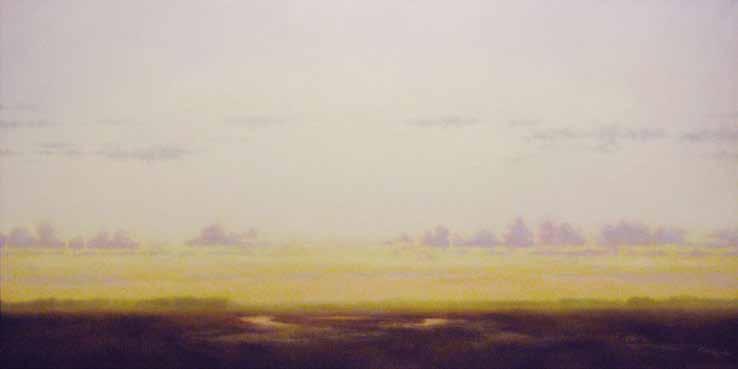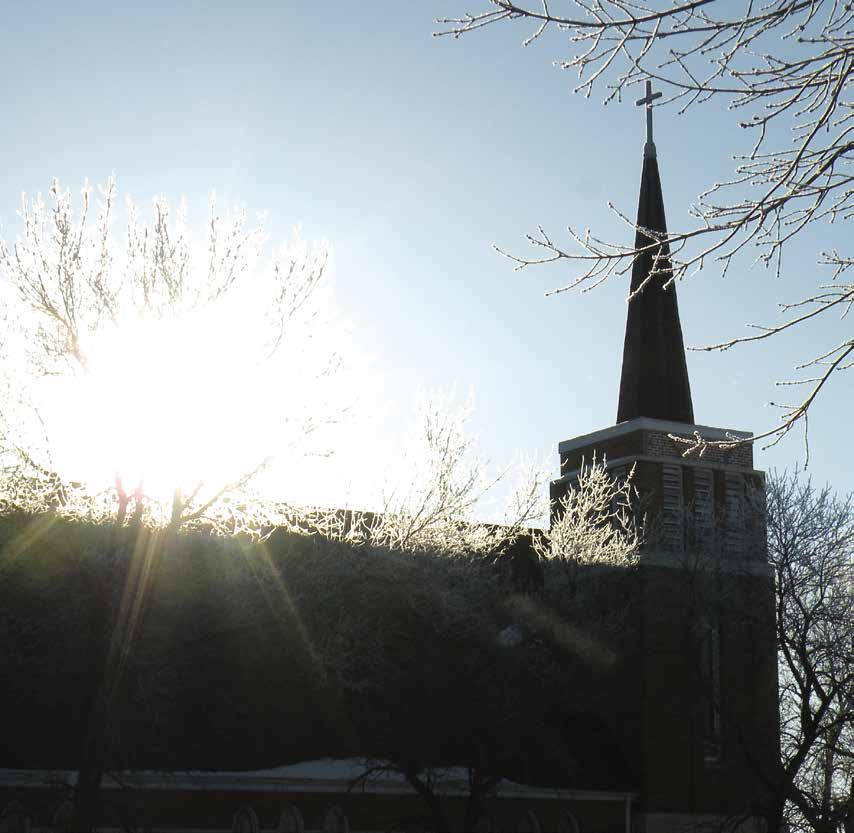
8 minute read
Places That Matter: Humanities and Economic Development
David Boggs, Junction. Watercolor and Encaustic, 12” x 24”
By Kip Bergstrom
Advertisement
These remarks were first presented on July 17, 2012, at a regional forum on the humanities and civic life organized by the American Academy of Arts and Sciences and the six New England state humanities councils. To hear the entire presentation, go to http://www.amacad.org/binaries/video/streamPlayer. aspx?i=249.
The most important role of the humanities in economic development is in its contribution to the preservation and enrichment of what the National Trust calls “places that matter”—places that people care about.
In the throes of a jobless recovery from the Great Recession, it is fashionable to think that economic development is all about jobs. It is not. It is at least equally about making great places. Or to put it another way, I believe that our most important work as a species is to create places that matter, and that economic development can contribute to that mission, or detract from it, depending on how it’s done. Too many places have sold their souls chasing economic growth, and are now realizing how hard it can be to use some of their prosperity to buy back some of their soul.
The first and most revolutionary thing we ever did as a species was what we now know to be 40,000 years ago, when our ancestors created the first public art, using their hands as stencils, blowing pigment onto the cave wall around them, showing through that first act that our brains are capable of symbolic, conceptual thinking, uniquely among all species.
The whales and the dolphins have language, but only we have art and science, and the symbolic and conceptual thinking that makes it possible. And in an unbroken chain from that first cave painting to today, it is the same brain that made that first cave art which could conceive of, build a machine to detect, and then discover the Higgs boson particle. From primitive cave painting to a new understanding of the universe and its origins, there is one brain with its unique capacity for pattern recognition and conceptual thinking, one unified creative process that is the same for the best of our art and science. Truly, then, we are art. We are the humanities, what makes us human.
Those first cave drawings, crude as they were, nonetheless transformed a hunk of rock into a place of meaning. The drawings proclaim: “We are here. This is our place.” In 40,000 years of practice, we’ve gotten much better at public art, but art still has much of that magic of its first application, the ability to transform something dark and scary into something safe, inviting, and vibrant; and more quickly and cheaply than any other thing we can do.
I believe very strongly in this proposition:
Great art makes great places. Great places attract great talent, and great talent creates great jobs. It is based on the idea that mobile, young talent—the lifeblood of innovative companies—like to live in cool places, and that art is one of the cheapest and fastest ways to create cool places. This role of art in placemaking has much more economic impact than the economic impact of spending by arts organizations and their patrons. The same is true of historic preservation: the economic impact of historic preservation in placemaking is more significant than the direct economic impact in construction jobs and increased property tax revenues.
I believe that if we prove this connection to placemaking and talent recruitment, we can increase state and federal funding for arts and historic preservation and for the humanities.
Historic preservation has three roles in placemaking. The first is that great historic buildings are great art. Architecture is an art form that adds beauty to our lives and that adds texture, character, and distinctiveness to our places. Not all old buildings are works of art, but many of them are, and they are worthy of preservation for that reason and because they make the places we live and work places that matter.
It is also true that great history makes great places. Historic buildings have another dimension that goes beyond the aesthetic: they are vessels of meaning. They have a story. They remind us of who we are, where we’ve been, and by giving us that perspective, help us to see where we’re going, who we might become. History provides us context that give our lives meaning and continuity and helps us understand the environments we live in. Some buildings become the vessels for the creation of new stories in their adaptive reuse. Some have such important stories that we do not allow them to be recycled as offices or housing, but preserve them as public spaces. But these too continue to be the crucibles of our reinvention, as the power of the original story inspires the creation of new ones.
Our best buildings both carry stories and make stories in ways that are deeply personal. The Greeks called this civitas—a collective pride of place that comes of a sharing of stories, past and present. This idea of civitas, of lived-in and living history, is something that we on the East Coast have more of than other places in the country. I grew up in the West, where history is like a butterfly mounted on a board under glass. You can look at it, but not touch it. It blew my mind when I first moved here that you could sleep in history, work in history, eat in history, hold your most significant public and private events in history. Our ancestors and their stories are always with us here, and those stories help to guide us forward. We are, in a larger sense, the stewards of the nation’s stories, our legacy to preserve. In the West, the critical legacy is wilderness, landscapes untouched by people and buildings. Those landscapes inspire us too, giving our nation its sense of possibility. That is the West’s legacy to preserve. Ours is history.
In telling that history, it is critically important not to just to tell the stories of the folks who did the best job of keeping their objects. In Connecticut, our history is not primarily that of the Puritans and their descendants, though you might not guess that based on the number of their homes we have preserved. The Connecticut state motto, “Qui Transtulit Sustinet,” translated into modern English means “Where the Immigrant Prospers.” . . . For over 350 years, immigrants have prospered here, and still do. Their stories are can be found in many places, but especially in the mill buildings of the nineteenth century and in ethnic urban neighborhoods, towns, and villages that still thrive today.
Many of our cities have a higher percentage of foreign-born today than they did in the early 1900s at the peak of industrialization and European immigration. They are a diverse lot, this latest wave of immigrants, hailing from Latin America, Europe, Asia and Africa, with a broad range of educational experience. In fact, the influx of college-educated, foreign-born young people more than offsets the outflow of American-born, college-educated young people, such that New England actually has a brain gain going on, courtesy of immigrants. . . .
State humanities councils, historical societies, and cultural organizations all over New England have valued immigrant experiences—current and historical—and recognize that the stories of diverse people create our heritage. Our built environment with its rich stock of colonial and nineteenth-century architecture has also been the traditional hallmark of these values and what makes New England locales “places that matter.”
It’s easy to get carried away with heritage architecture and historic preservation precisely because buildings are vessels of meaning. But they are also just buildings. In fact, sometimes, old buildings are more important for the fact that they are old, than that they are meaningful. When Jane Jacobs, the great urbanist, said [in her book, The Death and Life of Great American Cities] that the four key physical ingredients to great neighborhoods are density, mixed use, short blocks, and old buildings, and when she said that new ideas come from old buildings, she was not talking about heritage architecture. In both instances, what she was talking about was cheap space. When you redevelop an old building, you often make it into a new building from a rent perspective. This narrows the range of uses that can afford to be in the building, in particular the income/ ethnic mix of people, the mix of retail, and the mix of commercial. This is why gentrification leads so often to its own demise, making distinctively funky places into homogeneous, upscale, generic-chic places.
While mixed use and even mixed income may fly in the face of years of misguided zoning policy and cultural tendencies, it is exactly the formula that produces sustainable, dynamic and growing economies. It’s important to keep a significant portion of old buildings in a place undeveloped and accessible for low-budget uses, and to build affordable housing and affordable retail and commercial space into redevelopment projects (including through the use of historic preservation tax credits), if you want to preserve diversity and distinctiveness.
The ultimate challenge of the humanities is to engage a network of public and private capabilities to create places that are not cookie-cutter subdivisions, strip malls, and office parks—the generic, default development pattern of most of the suburban American landscape—but rather places that are “whole” and “authentic.” That is, places that are full of life; diverse and distinctive in their built form, natural environment, and social networks; empowering of their people; transit and digitally connected; water and energy efficient; and disaster resilient.
We need to use humanities, historic preservation, and art to deliberately sustain and expand diversity— of people, buildings, uses, businesses, habitats and species—in the face of prevailing economic forces that tend to diminish diversity. In other words, we need to prove, despite overwhelming evidence to the contrary, that a community can be economically successful without losing its soul. Our mission is to bring beauty to our places, to preserve and constantly renew their stories, and to sustain and enhance the diversity that makes us whole. There is no higher calling than that, nor any that is more important to our economy and our culture.
Kip Bergstrom is deputy commissioner of the Connecticut Department of Economic and Community Development. His portfolio includes the development of the innovation economy, statewide branding, as well as the arts and culture, historic preservation and tourism functions. He has a master’s degree from the Kennedy School of Government and the Graduate School of Design at Harvard University, where he was the first student to specialize in economic development.










